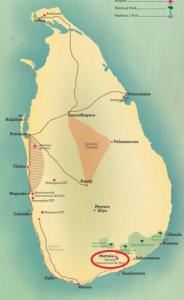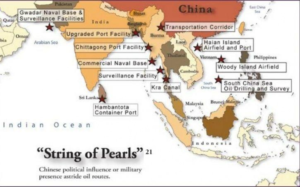In News: Officials in Sri Lanka said on Wednesday that they had requested a Chinese ship to leave the southern port of Hambantota after it was discovered to be carrying radioactive material.
About Hambantota Port
- The port of Hambantota is strategically located in the Indian Ocean, linking the Middle East and East Asia.
- Sri Lanka has agreed to sell a 70% stake in the strategic Hambantota deep-sea port to China for $1.1 billion.
- Hambantota port is a deep-water port on Sri Lanka’s southern coast.
- China will spend up to $1.1 billion in port and marine-related operations over the course of the 99-year lease agreement.
- The agreement has alarmed countries with competing strategic interests with China, especially India and the United States.

Benefits to China
- The port is expected to play an important role in China’s Belt and Road Initiative (BRI), which will link ports and roads between China and Europe.
- This agreement is also thought to offer China an edge in the bunkering market, which provides fuel to ships.
Disadvantages to India
- India’s disadvantages include fears that the port is part of a Chinese “string of pearls” designed to encircle India and dock its military vessels.
- The String of Pearls is a strategic hypothesis about China’s possible intentions in the Indian Ocean.
- It refers to a network of Chinese military and commercial facilities and relationships that stretches from the Chinese mainland to Port Sudan’s sea lines of communication.
- The Strait of Mandeb, the Strait of Hormuz, the Strait of Malacca, and the Lombok Strait, as well as other strategic maritime centres in Pakistan, the Maldives, Sri Lanka, Bangladesh, and Somalia, are all crossed by these sea lines.

















